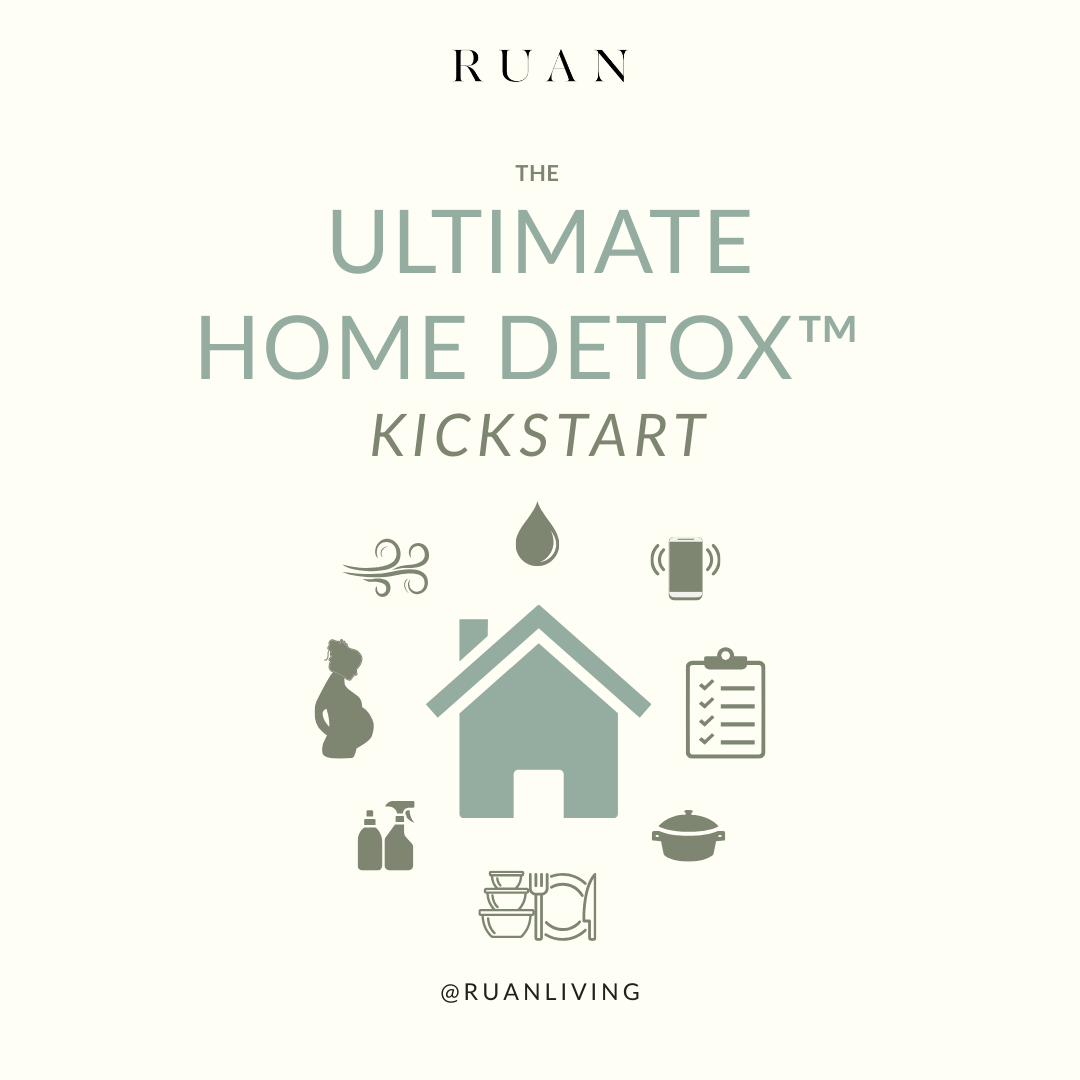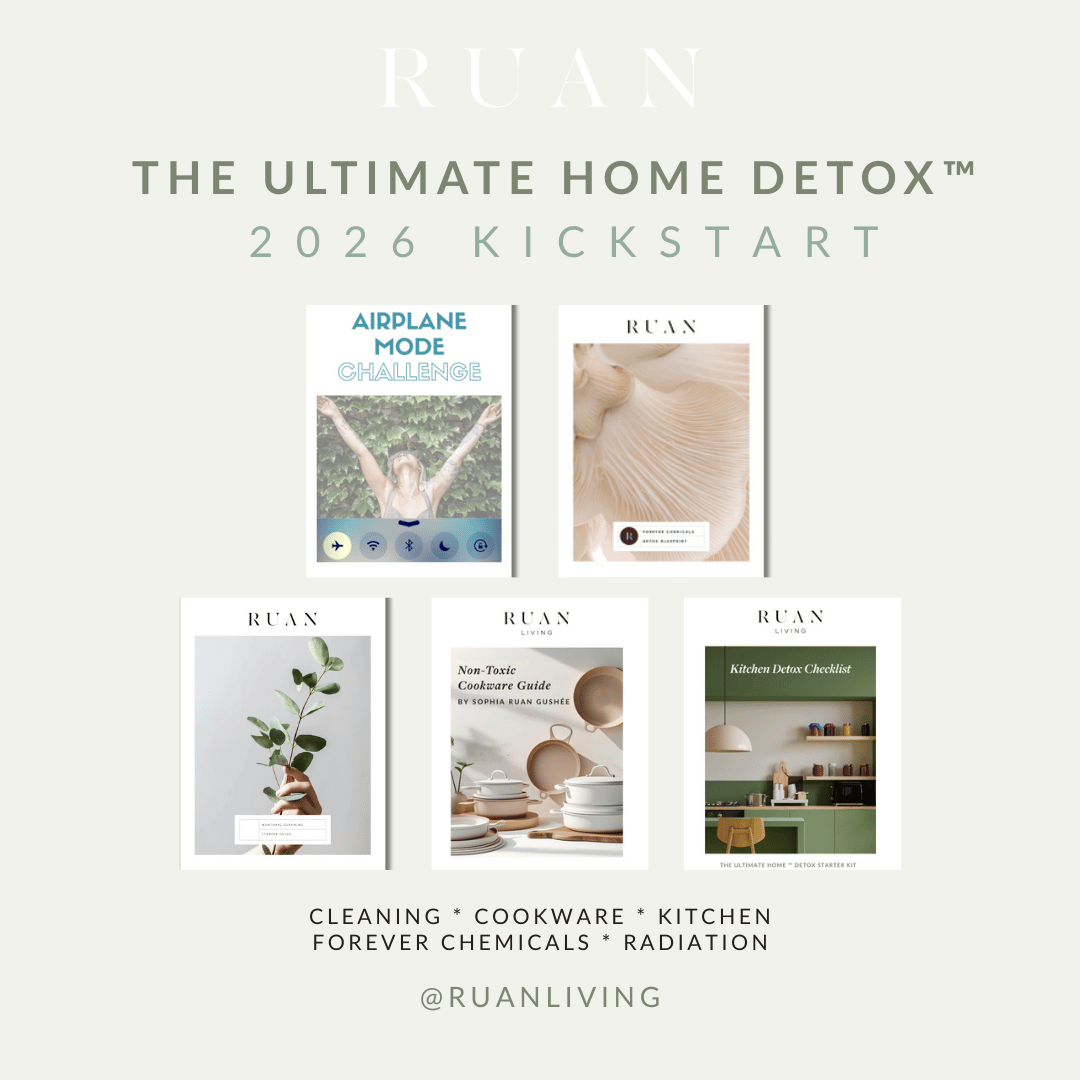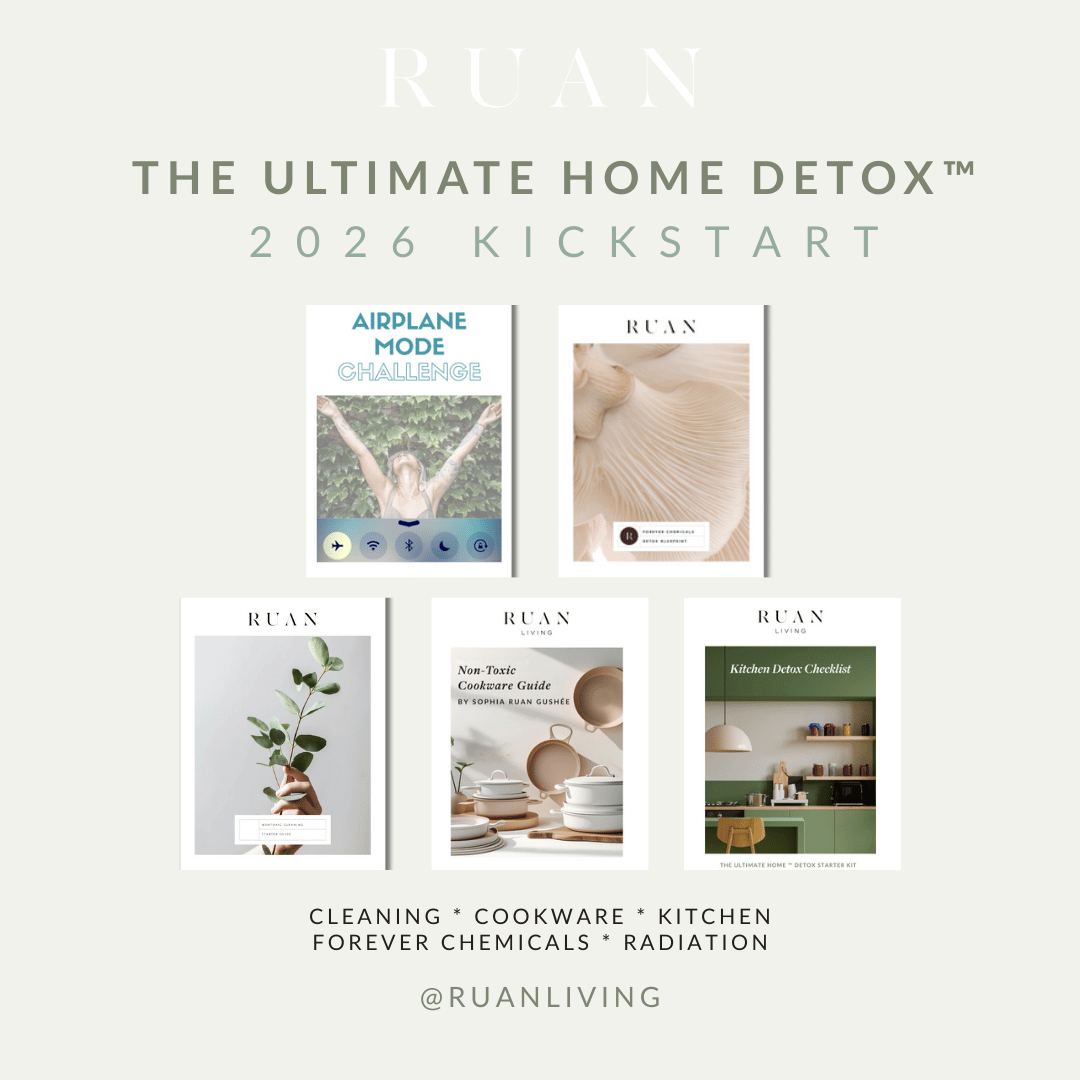
Overlooked Environmental Contributors to Infertility (& How to Protect Yourself)
Oct 31, 2019Have you heard of the term fecundity?
Fecundity is the probability of bearing live children whereas fertility is the actual production of live offspring.
Trying to understand the distinction between the two introduces you to the complexity of fertility. For example, a man or woman could have some reproductive "abnormality" that decreases their fecundity (the ability to conceive and/or deliver a healthy child).
With more women delaying their start in trying to conceive due to their careers—and fertility naturally decreasing as we age—studying fecundity in females is complicated or distracted by this. What helps is evaluating those under age 25.
According to a December 2005 report of the CDC’s National Survey on Family Growth(1):
the fastest-growing segment of U.S. women with impaired fecundity (the capacity to conceive and carry a child to term) is those under 25
Explanations for this trend continue to be scientifically explored. And, increasingly, scientists recognize the importance in studying environmental contributors to infertility.
If you and your partner have been trying to conceive for at least a year, mindful environmental and lifestyle tweaks can improve your conditions for conceiving and for a healthier pregnancy outcome.
In this article, we will discuss the most obvious environmental contributors to infertility, given the current body of science, as well as eight tips to protect yourself.
What is Infertility?
A 2001 World Health Organization report, "Current Practices and Controversies in Assisted Reproduction," estimated that 80 million people worldwide are affected by infertility.
Infertility is a term generally used to describe a couple that cannot get pregnant despite having frequent, unprotected sex for at least a year. Infertility can result from issues associated with either the female or male, or both.
In males, issues that may impair fecundity include low sperm count, low sperm motility, and altered sperm morphology.
In females, issues that may contribute to infertility include early menopause, thyroid irregularities, polycystic ovarian syndrome, and Fallopian tube obstruction.
Unexplained infertility is estimated in up to 10% of cases.
Environmental Causes of Infertility
It is either rare or impossible to point to one cause of infertility. As Julia R. Barrett reports from Louis Guillette, a professor of zoology at the University of Florida in Gainesville, in Barrett's 2006 article “Fertile Grounds of Inquiry: Environmental Effects on Human Reproduction”:
Fertility transcends the reproductive system... When you talk about infertility, you literally are talking about probably almost every system in the body—infertility is an integrated signal of all these different systems... Trying to tease out which system, or more than likely what multiple systems have been altered, leading to that phenomenon, is very tough work.
However, the studies on the body burden of certain populations of males and wildlife as well as laboratory animals studies indicate that certain toxic exposures may be associated with infertility (this is elaborated below in the tips). For example, sperm quality (often assessed by sperm count, concentration, motility, and morphology) has experienced a global decline over the past few decades. The July 2017 article "Sperm Count Dropping in Western World" in Scientific American reported that:
sperm count in men has dropped by more than 50% over the past 40 years in America, Europe, Australia, and New Zealand.
Causes for this drop in sperm count are not fully understood. The conditions required for science to study the effects of environmental and lifestyle factors on fecundity is challenging. In addition to genetics, known risk factors include advanced age, over- or under- weight, poor nutrition, lack of exercise, smoking, alcohol and substance abuse, sexually transmitted diseases, certain medications, and chemotherapy.(1)
Increasingly, toxic chemicals (like pesticides, herbicides, and endocrine disrupting chemicals), heavy metals, and electromagnetic fields (EMFs) from our technologies are being studied for contributing to infertility. An important nuance on the effects from toxic chemicals, heavy metals, and electromagnetic fields are the timing and dose of exposure. These toxic exposures are understood to impair fertility in four main ways:
- endocrine disruption
- damage to the female reproductive system
- damage to the male reproductive system
- impaired fetal viability
How to Protect Yourself from Harmful Environmental Factors
While I am not a physician or scientist, my 12+ years of study on our unnecessary toxic chemicals, heavy metals, and electromagnetic fields from our technologies stress the value of practical detox tweaks that I share in my book A to Z of D-Toxing: The Ultimate Guide to Reducing Our Toxic Exposures and in my online workshops at my D-Tox Academy.
Below are a few high-impact tips to protect your fertility. Please consider my D-Tox Academy and Ruan Detox Immersion Program for further guidance.
1. Eat a plant-based diet
Populations in wildlife and males that have experienced signs of infertility or altered reproductive development that may contribute to infertility often have certain persistent toxic chemicals—like PCBs, dioxins, DDT, and PFCs—that are found in higher concentrations in foods that are higher in the food chain—like dairy, meat, and certain fish. An organic plant-based diet will reduce your toxic exposures. Use the Environmental Working Group's annual list of the Clean 15 and Dirty Dozen to prioritize your budget. More specific guidance is provided in the Ruan Detox Immersion Program.
2. Improve your indoor air quality
Air pollutants have been associated with infertility. Often, indoor air can be at least 2 to 5 times more polluted than outdoor air. Don't smoke, be thoughtful of what you burn (like cooking, candles, and fireplaces), and consider the Air Detox section of the D-Tox Academy.
3. Prioritize cleaning and wash your hands often
Certain chemical flame retardants—PBDEs—have been found to alter sex hormones and decrease male fertility. So prioritize cleaning dust, washing hands often, discarding what you don't need at home, and purchasing mindfully. The Dust Detox and Hands Detox sections at the D-Tox Academy and the Ruan Detox Immersion Program can help.
4. Limit heat exposure prior to conception
Male sperm should avoid prolonged exposure to heat. So be mindful of laptops on the lap, cell phones in pant pockets, and talk to your doctor about baths and saunas. The EMF Detox workshop at the D-Tox Academy offers many power lessons to help reduce your unnecessary EMF exposures.
5. Limit unnecessary medications
Consult with your doctor before taking any medications for the treatment of depression, high blood pressure, or bacterial infections. Discuss whether these medications may impact fertility and decide with your physician on your best course.
6. Avoid alcohol, tobacco, and recreational drugs
Alcohol, tobacco, and marijuana can contribute to infertility. If you are pregnant, use of these substances pose risks to the fetus.
7. Read product labels of your cleaning and personal care products
Phthalates and parabéns have been studied for their associations with infertility. They are more likely to exist in "fragrance," lotions, shampoos, and conditions. So read product labels to reduce your exposures.
8. Avoid plastics and canned foods.
Plastics and canned foods can expose you to hormone disrupting chemicals too, like BPA and phthalates. As much as you can, avoid foods that have been in contact with plastics and avoid eating canned foods (some cans are lined with BPA (Bisphenol A) or a substitute chemical that may also be hormone disrupting.
Get supported
Following the tips above can help you reduce toxic exposures that can contribute to infertility. If you would like more guidance and support, then consider a membership at the D-Tox Academy and the Ruan Detox Immersion Program. In the meantime, be sure to be registered for the email newsletter to receive detox tips in your inbox. Small tweaks can transform.
Click the link below to sign up now!
References
(1) Barrett, Julia R. Environmental Health Perspectives Vol. 114, No. 11. 1 November 2006. Fertile Grounds of Inquiry: Environmental Effects on Human Reproduction.” https://ehp.niehs.nih.gov/doi/10.1289/ehp.114-a644
(2) Kelland, Kate. Scientific American. July 26, 2017. "Sperm Count Dropping in Western World." https://www.scientificamerican.com/article/sperm-count-dropping-in-western-world/
(3) Pizzorno, Joseph. Integrative Medicine. "Environmental Toxins and Infertility." 2018 Apr; 17(2): 8–11
(4) United Nations Environment Programme and the World Health Organization, 2013. "State of the Science of Endocrine Disrupting Chemicals - 2012." http://wedocs.unep.org/bitstream/handle/20.500.11822/19276/9789241505031_eng_UNEPWHO.pdf?sequence=1&isAllowed=y
(5) DeonandanRaywat and Marya Jaleel. International Journal of General Medicine. Global decline in semen quality: ignoring the developing world introduces selection bias.” Int J Gen Med. 2012; 5: 303–306. https://www.ncbi.nlm.nih.gov/pmc/articles/PMC3325016/
(6) Farhi, Adel and Liat Lerner-Geva. Environmental Health Perspectives. "Fertility Trends in Israel and the Association between Air Pollution and Adverse Reproductive Health Outcomes." Published: 20 October 2014 CID: 2893. https://doi.org/10.1289/isee.2014.M-12
(7) Braun et al. Environmental Health Perspectives. "Personal care product use and urinary paraben and phthalate metabolite concentrations during pregnancy among women from a fertility clinic." Published: 19 September 2013 CID: 3408 https://doi.org/10.1289/isee.2013.O-2-22-02
(8) Peretz et al. Environmental Health Perspectives. "Bisphenol A and Reproductive Health: Update of Experimental and Human Evidence, 2007–2013." Published: 1 August 2014 https://doi.org/10.1289/ehp.1307728
(9) Ehrlich et al. Environmental Health Perspectives. "Urinary Bisphenol A Concentrations and Implantation Failure among Women Undergoing in Vitro Fertilization." Published:1 July 2012https://doi.org/10.1289/ehp.1104307
(10) Potera, Carol. Environmental Health Perspectives. "REPRODUCTIVE TOXICOLOGY: Study Associates PFOS and PFOA with Impaired Fertility." Published:1 April 2009 https://doi.org/10.1289/ehp.117-a148a
(11) Gaskins et al. Environmental Health Perspectives. "Time-Varying Exposure to Air Pollution and Outcomes of in VitroFertilization among Couples from a Fertility Clinic." Published:3 July 2019CID: 077002 https://doi.org/10.1289/EHP4601
(12) Mahalingaiah, Shruthi et al. Environmental Health Perspectives. "Association of Hexachlorobenzene (HCB), Dichlorodiphenyltrichloroethane (DDT), and Dichlorodiphenyldichloroethylene (DDE) with in Vitro Fertilization (IVF) Outcomes." Published:1 February 2012https://doi.org/10.1289/ehp.1103696



